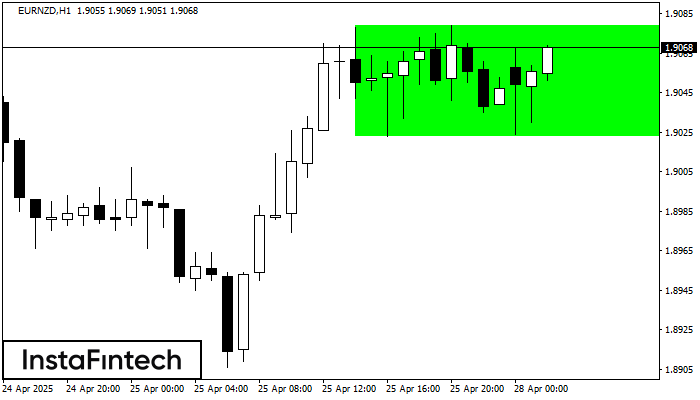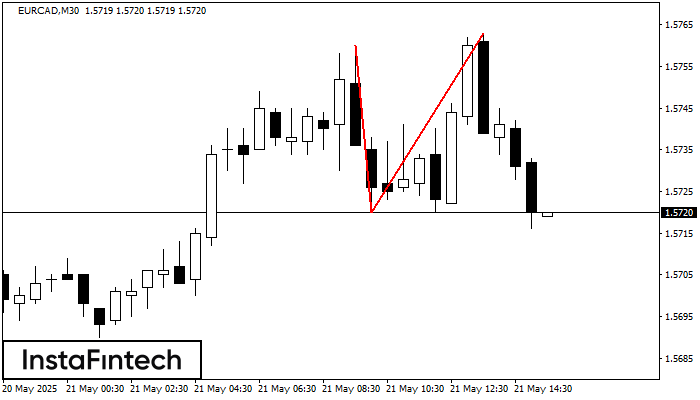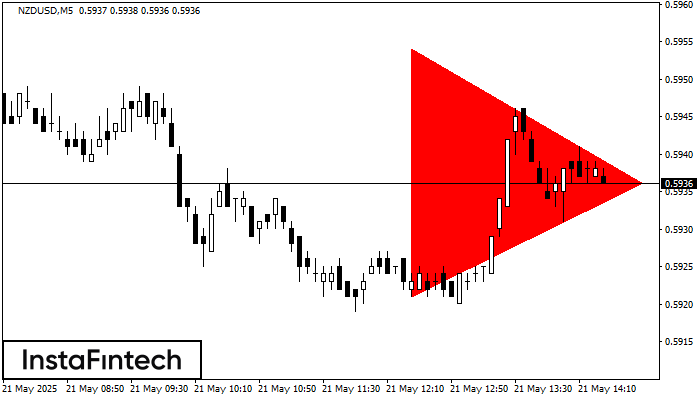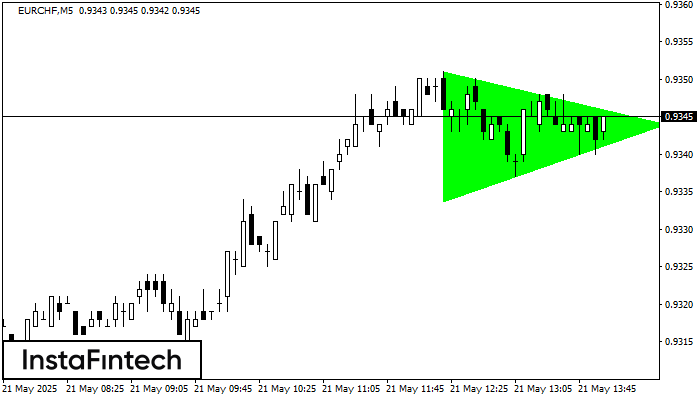Bullish Rectangle
was formed on 28.04 at 01:22:38 (UTC+0)
signal strength 4 of 5

According to the chart of H1, EURNZD formed the Bullish Rectangle which is a pattern of a trend continuation. The pattern is contained within the following borders: the lower border 1.9023 – 1.9023 and upper border 1.9079 – 1.9079. In case the upper border is broken, the instrument is likely to follow the upward trend.
- All
- All
- Bearish Rectangle
- Bearish Symmetrical Triangle
- Bearish Symmetrical Triangle
- Bullish Rectangle
- Double Top
- Double Top
- Triple Bottom
- Triple Bottom
- Triple Top
- Triple Top
- All
- All
- Buy
- Sale
- All
- 1
- 2
- 3
- 4
- 5
Doble Techo
was formed on 21.05 at 14:30:09 (UTC+0)
signal strength 3 of 5
El patrón Doble Techo ha sido formado en EURCAD M30. Esto señala que la tendencia ha sido cambiada de alcista a bajista. Probablemente, si la base del patrón 1.5720
Open chart in a new window
Triángulo Simétrico Bajista
was formed on 21.05 at 13:26:16 (UTC+0)
signal strength 1 of 5
Según el gráfico de M5, el NZDUSD formó el patrón Triángulo Simétrico Bajista. Este patrón señala una tendencia bajista en caso de que el límite inferior 0.5921 sea roto. Aquí
Los marcos de tiempo M5 y M15 pueden tener más puntos de entrada falsos.
Open chart in a new window
Triángulo Simétrico Alcista
was formed on 21.05 at 13:01:22 (UTC+0)
signal strength 1 of 5
Según el gráfico de M5, el EURCHF formó el patrón Triángulo Simétrico Alcista. El límite inferior del patrón toca las coordenadas 0.9334/0.9344 donde el límite superior cruza 0.9351/0.9344
Los marcos de tiempo M5 y M15 pueden tener más puntos de entrada falsos.
Open chart in a new window




















